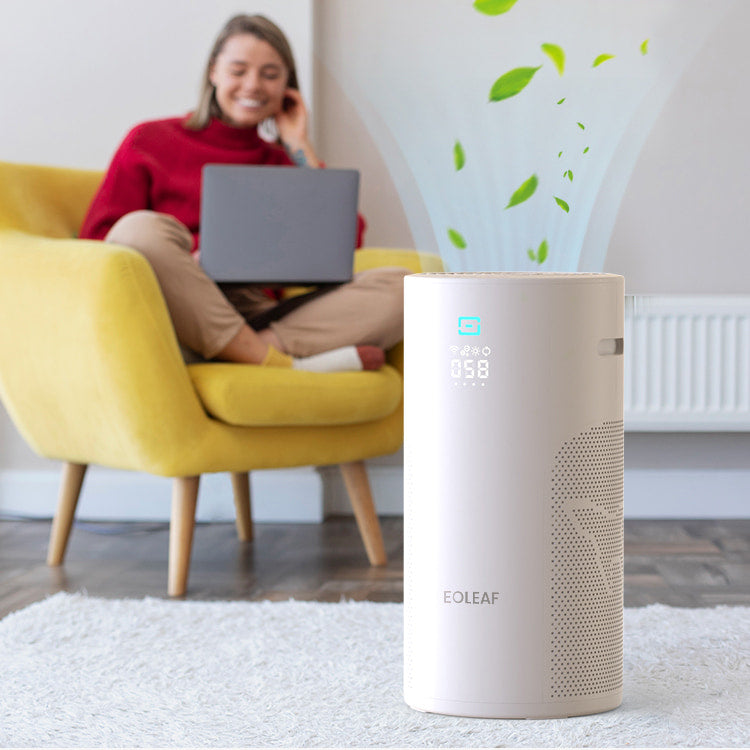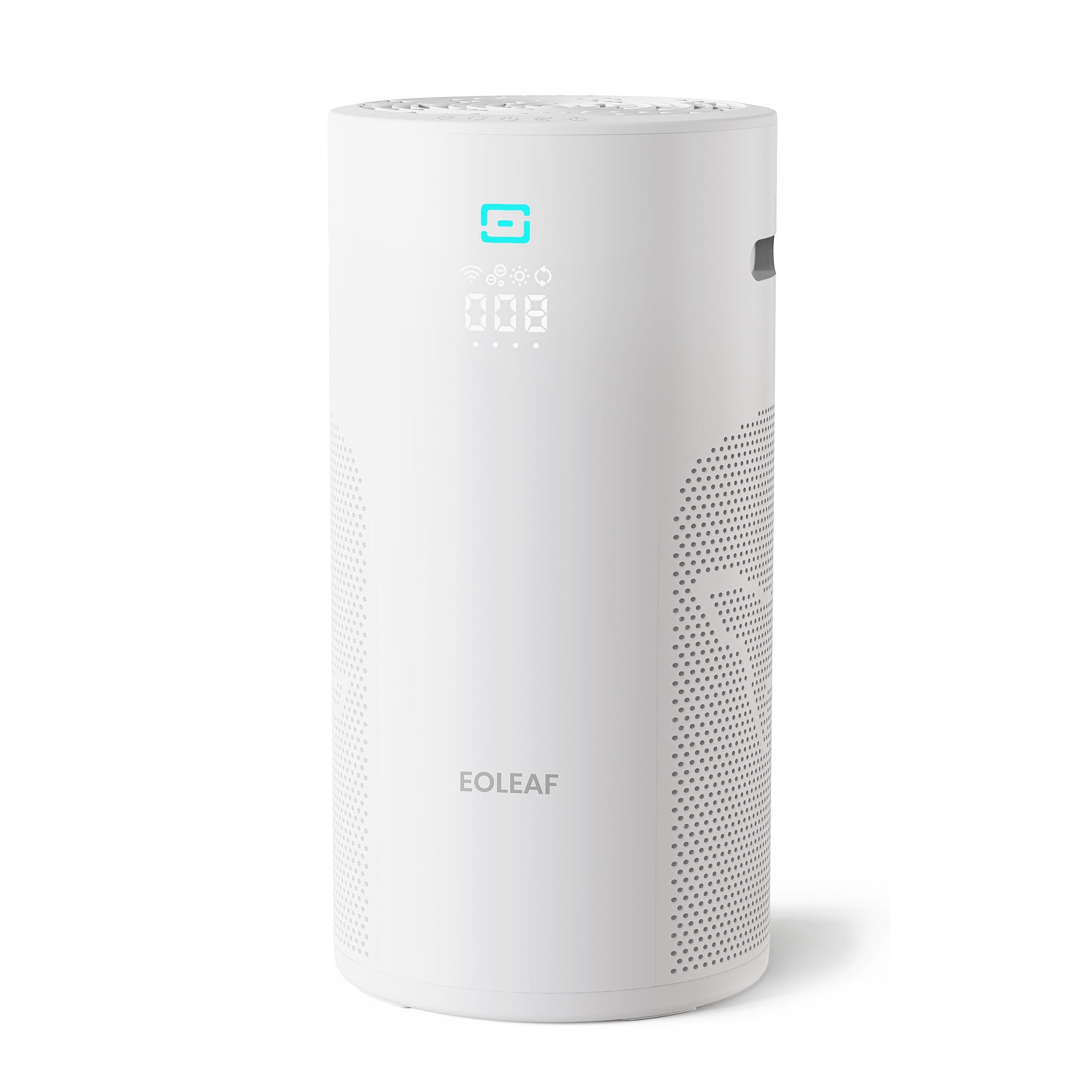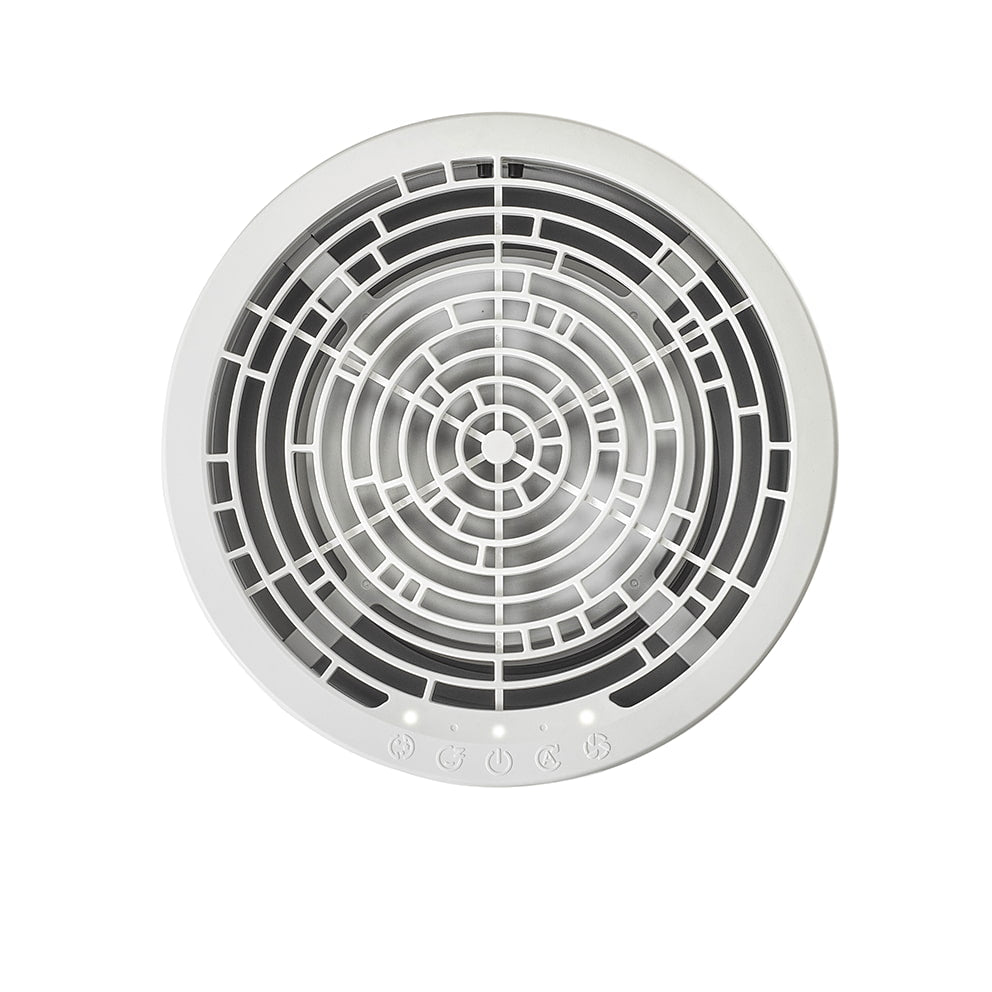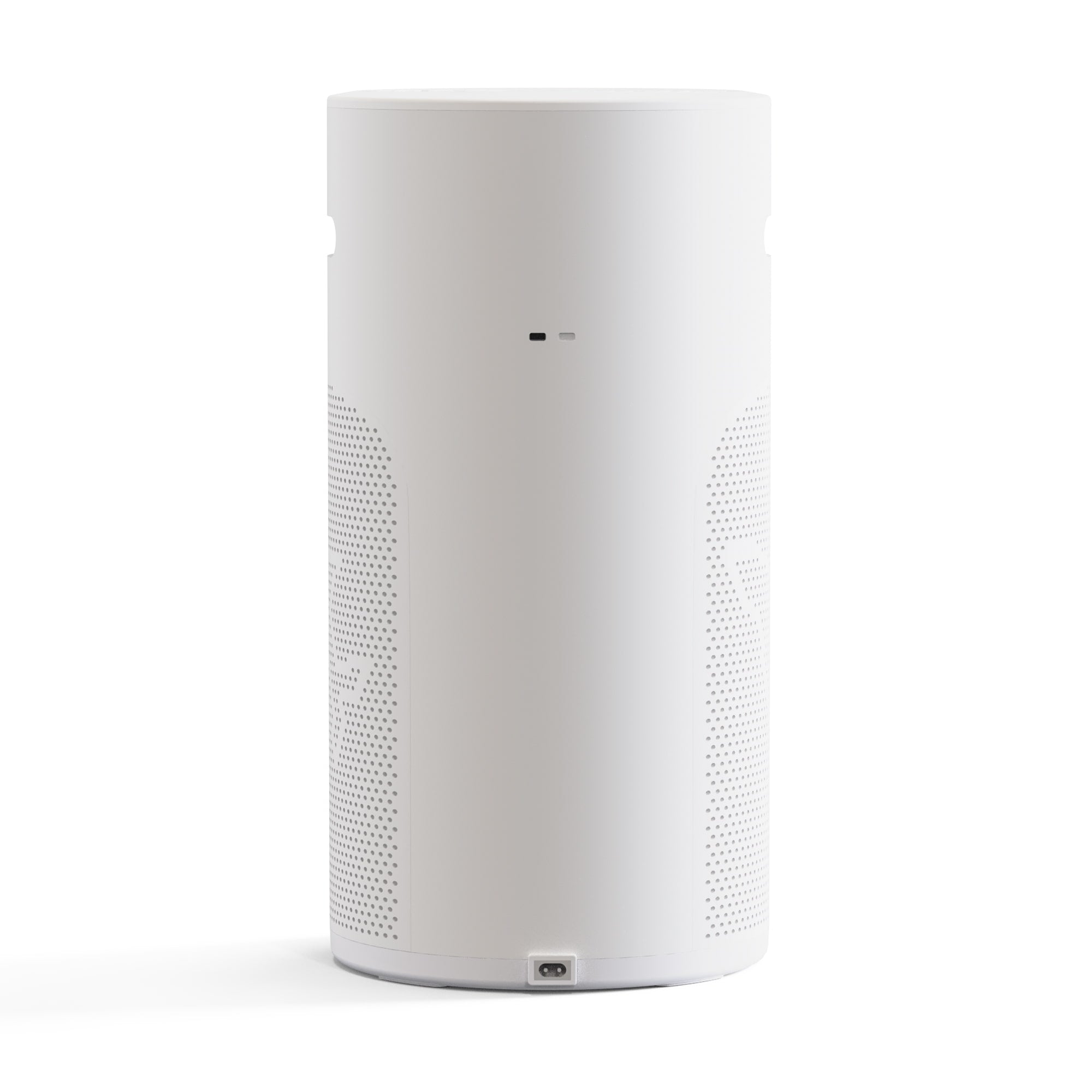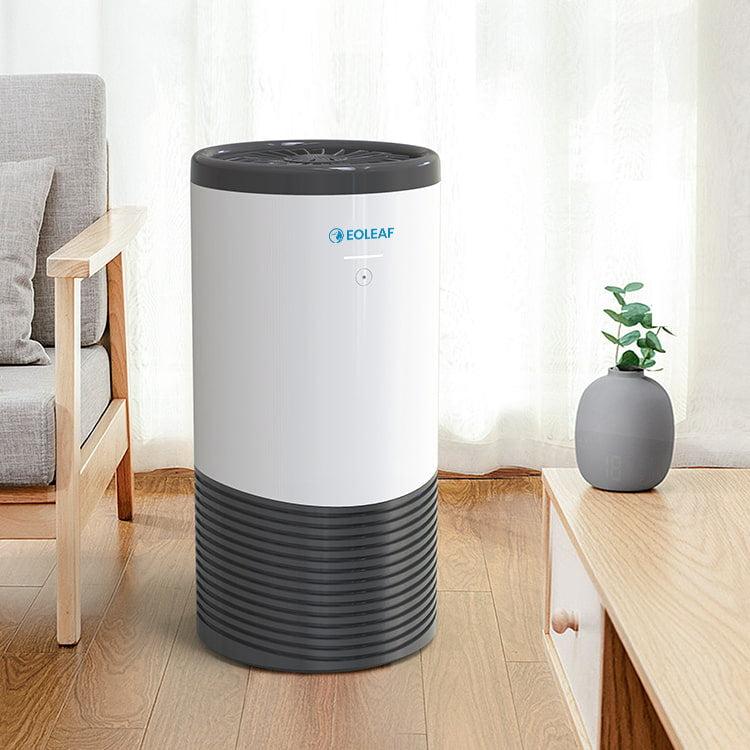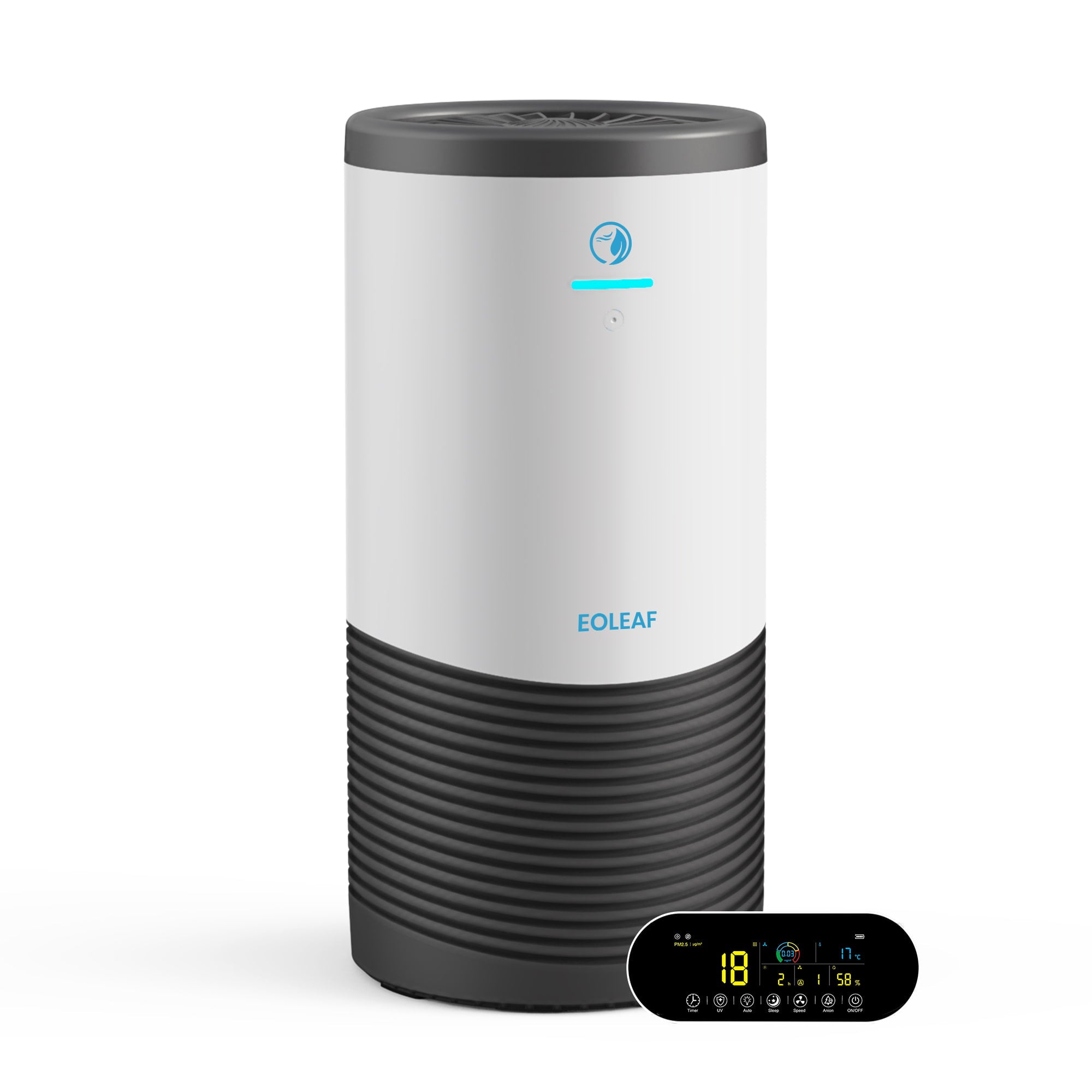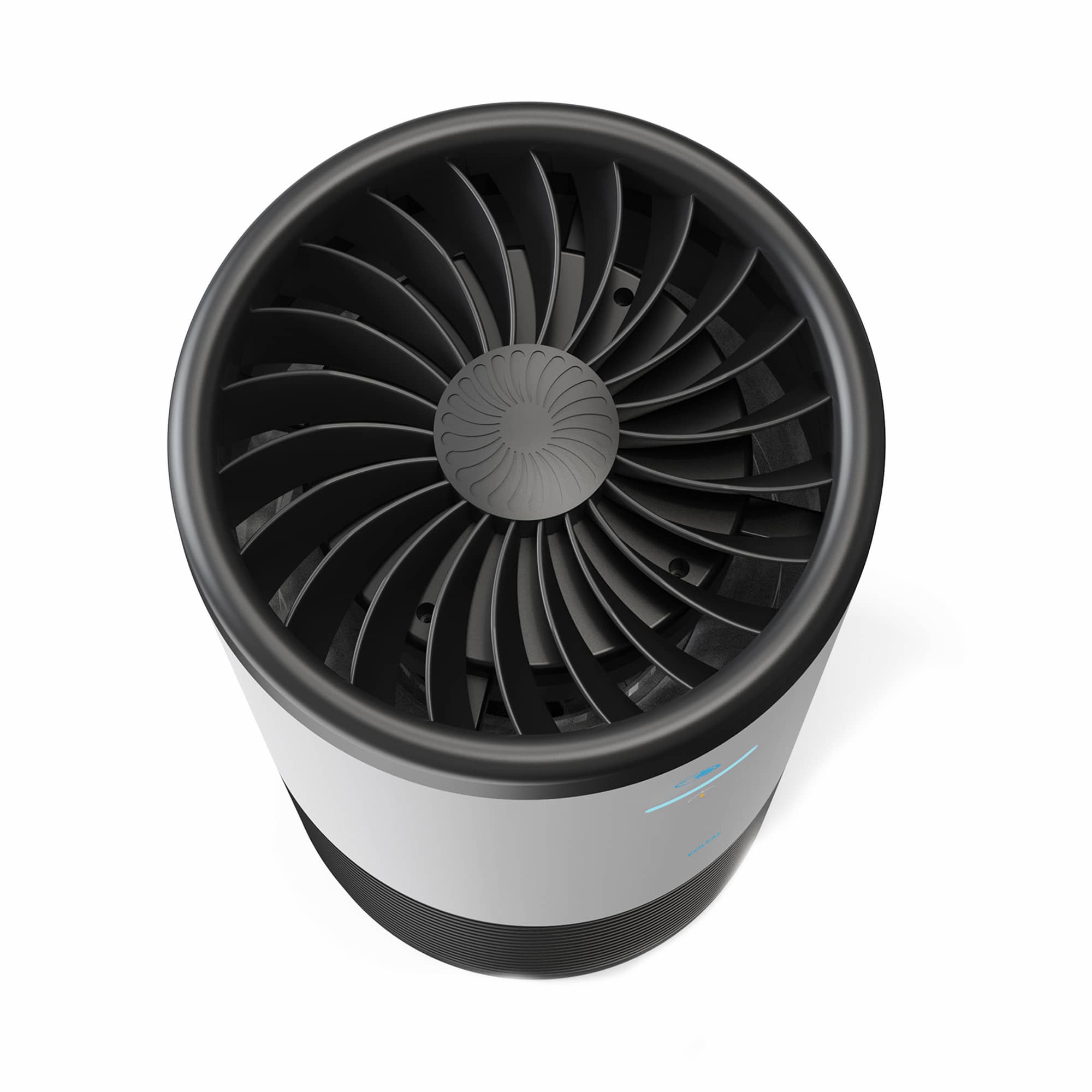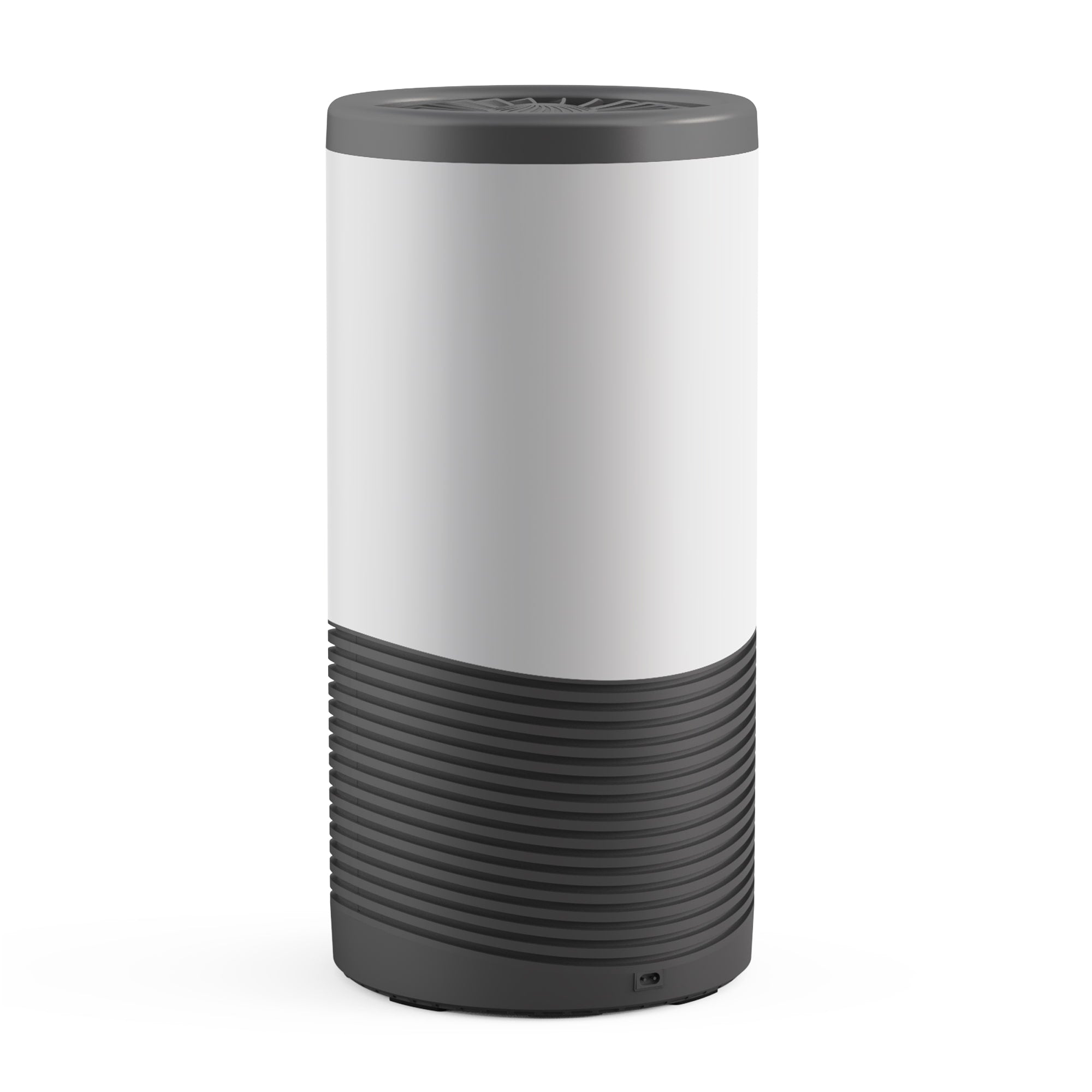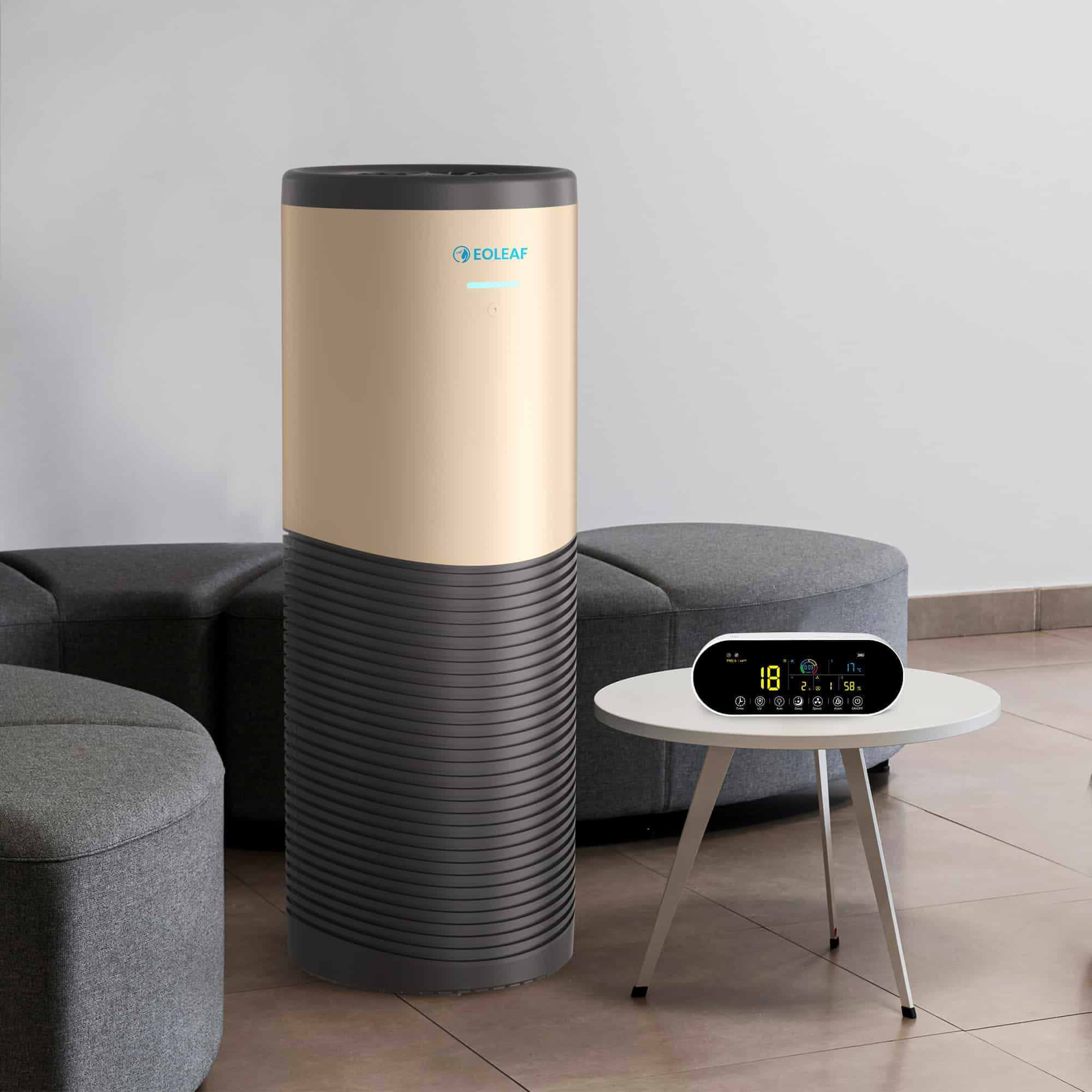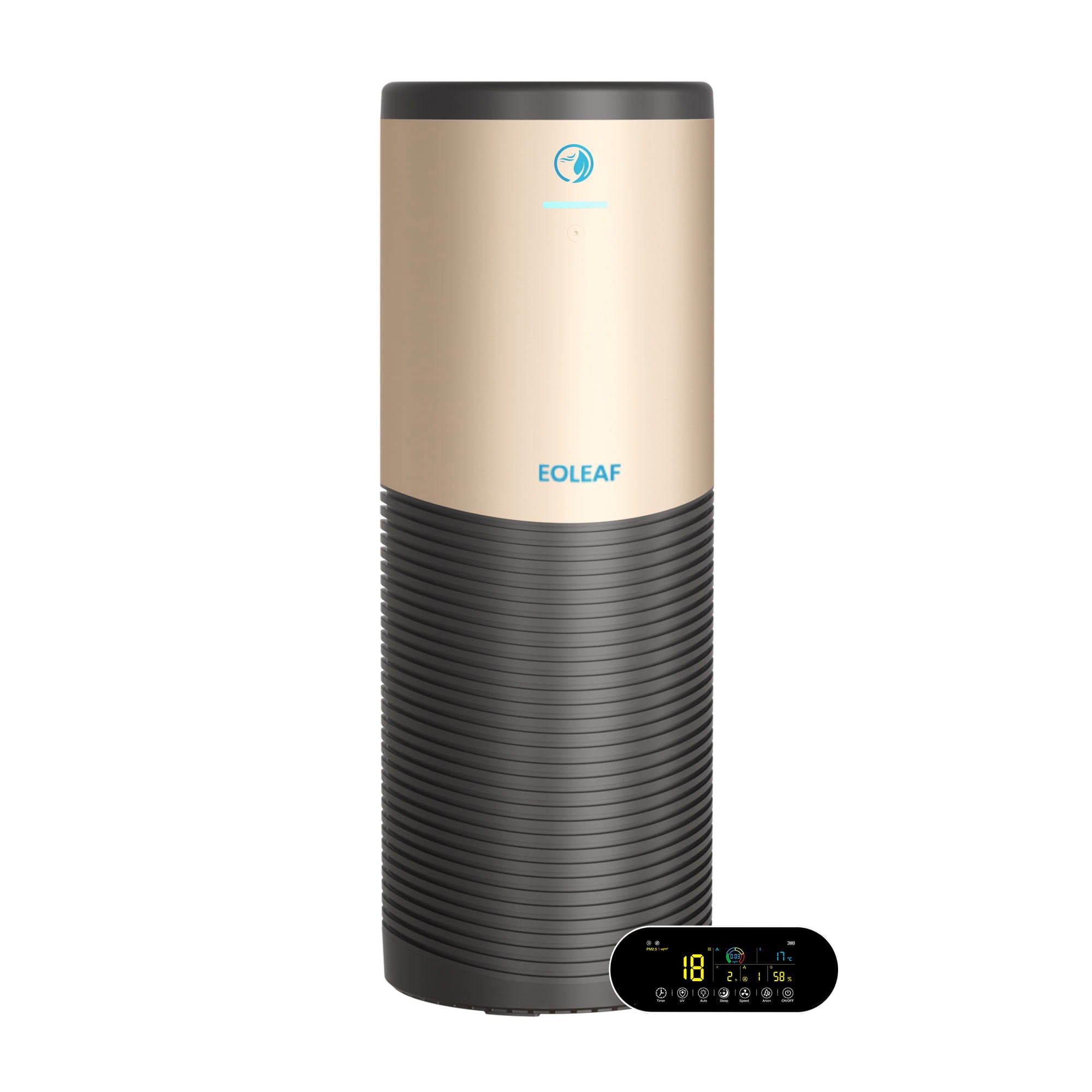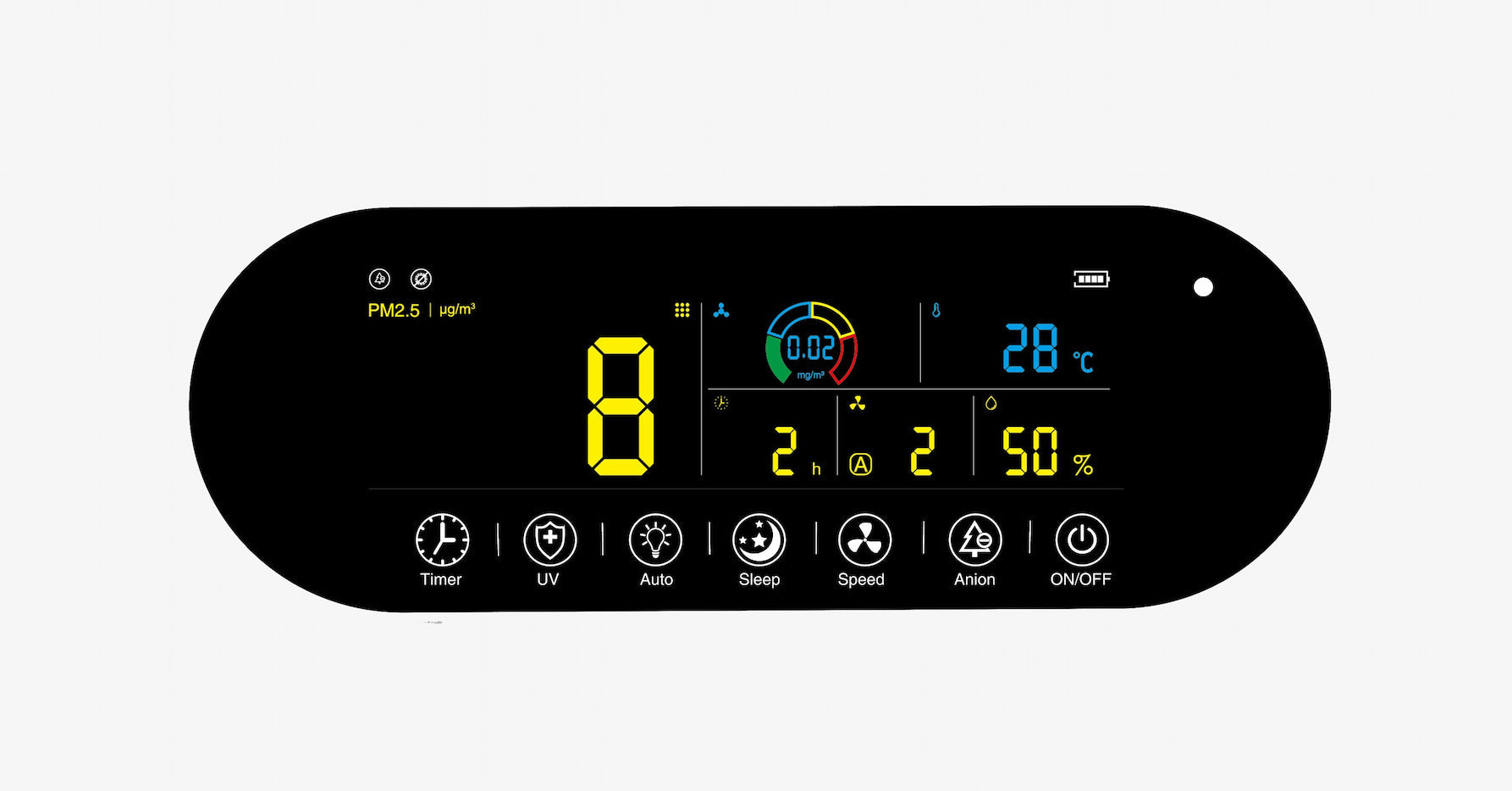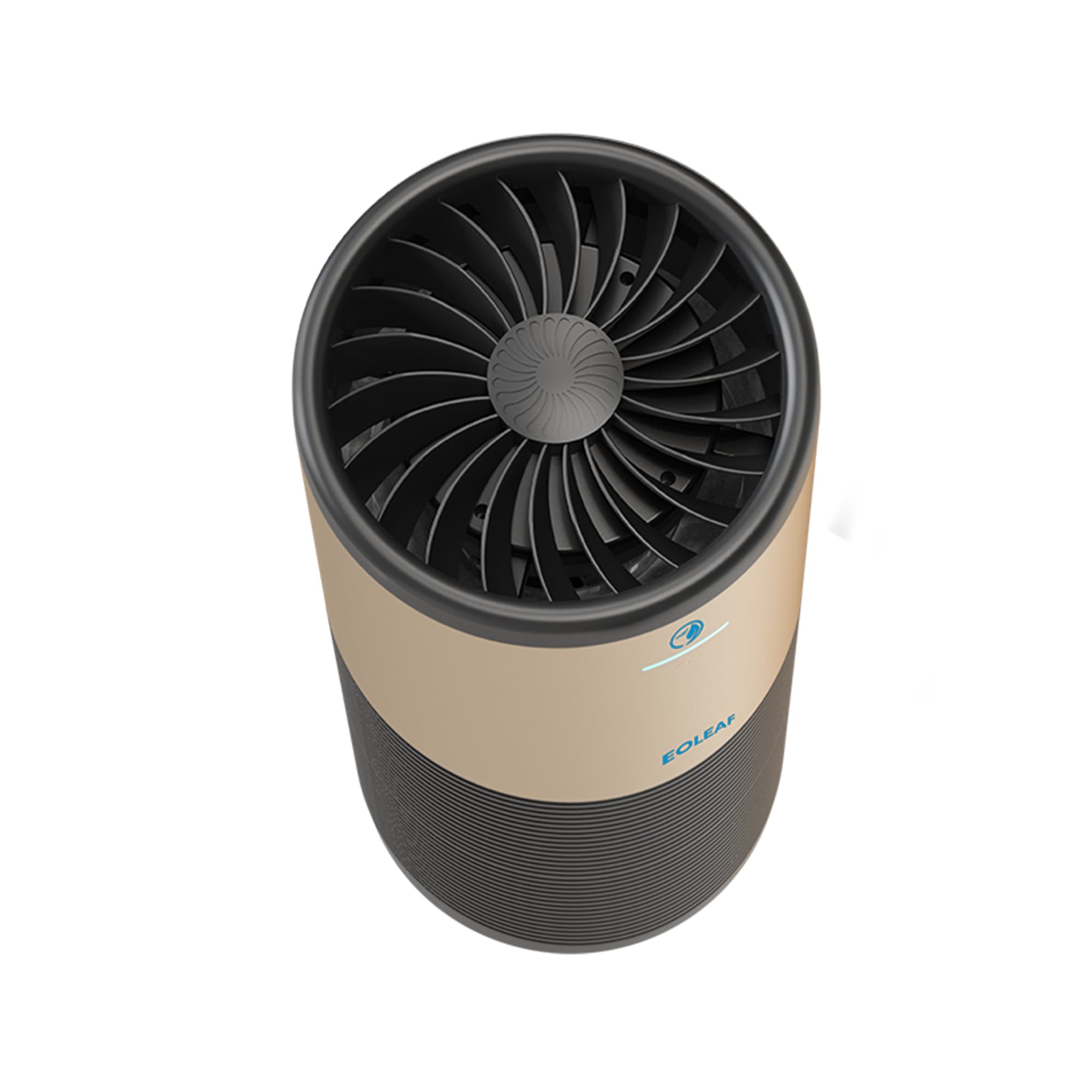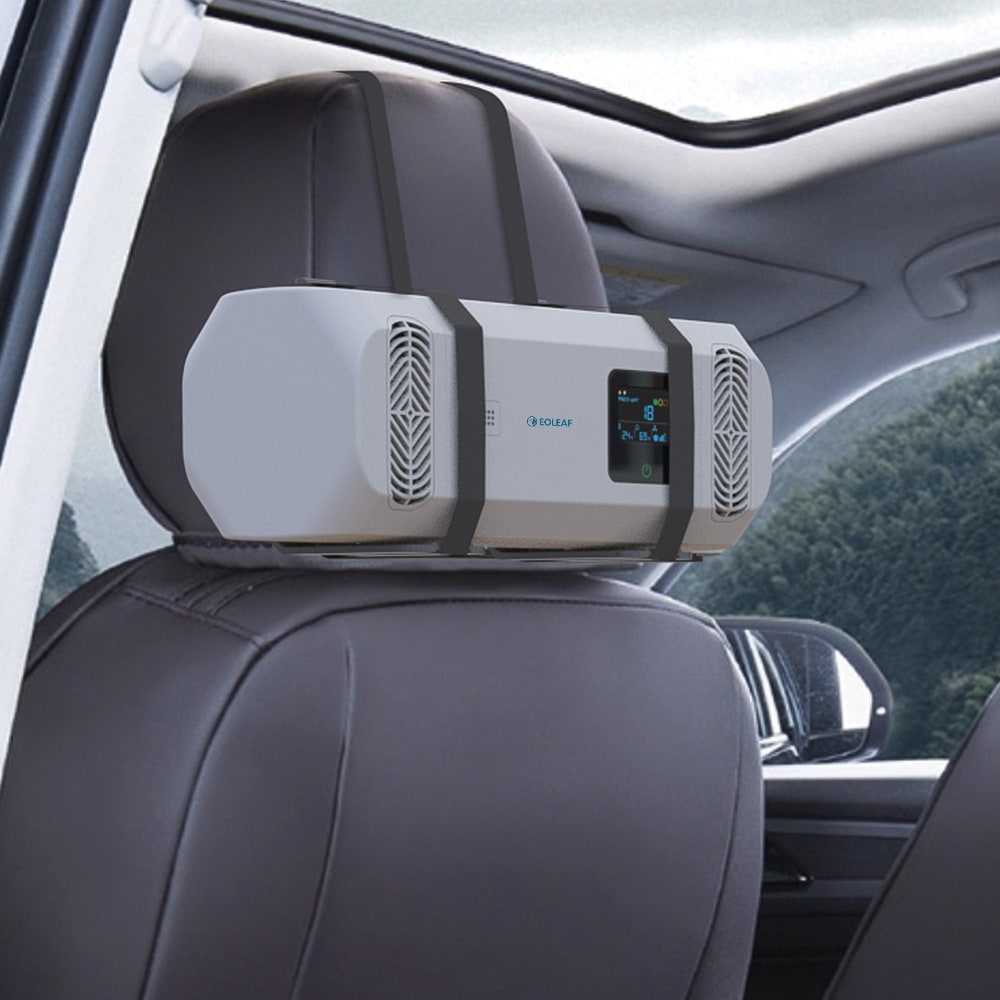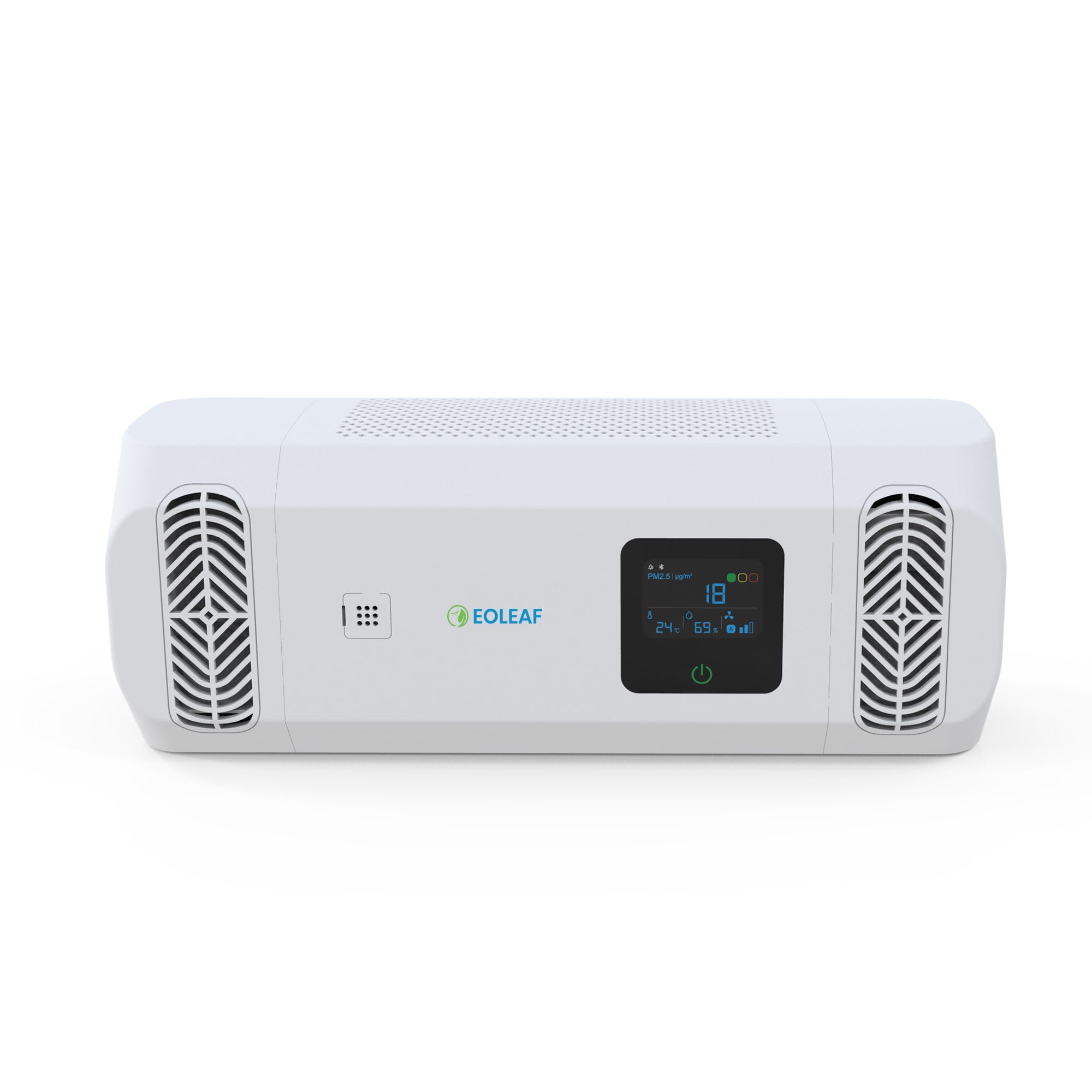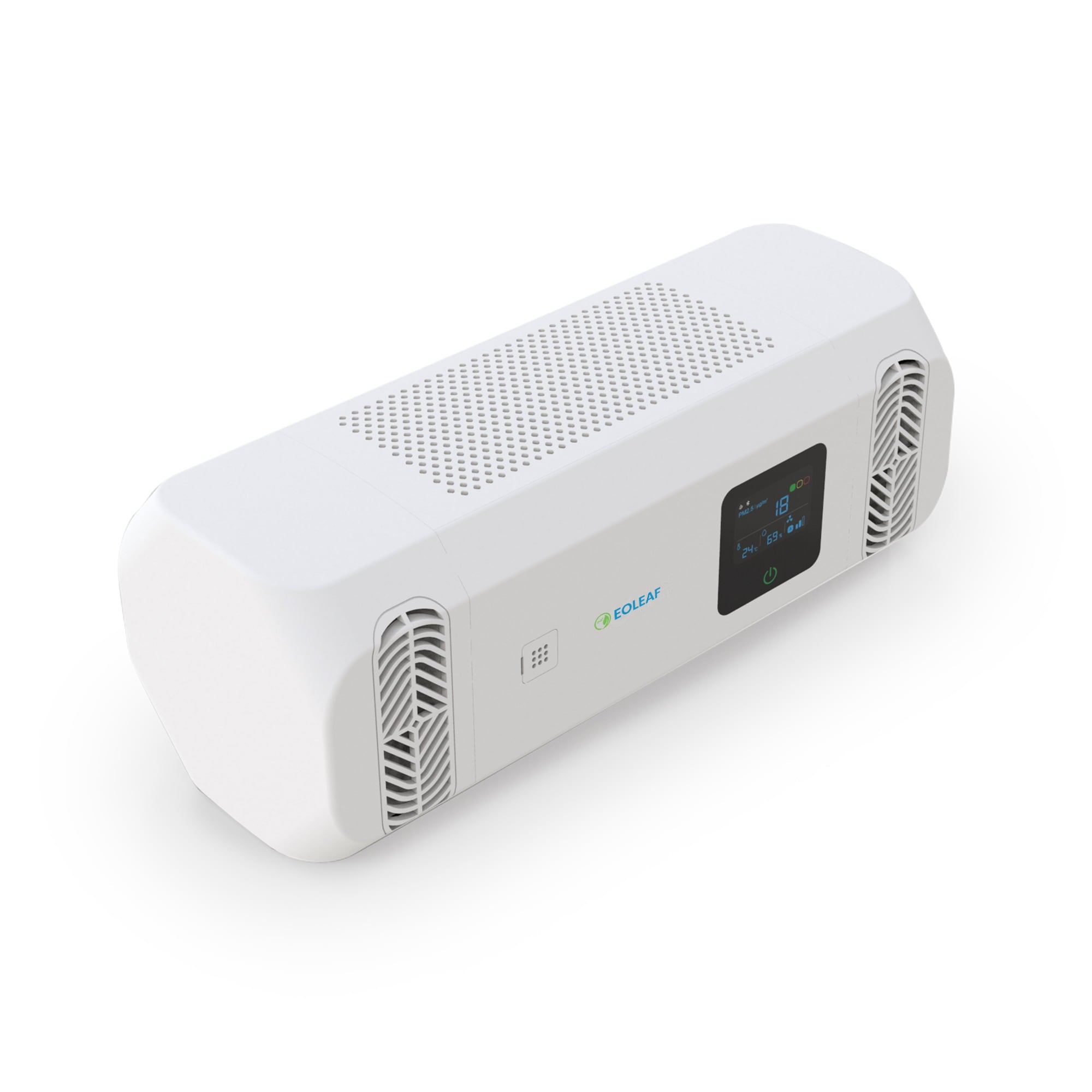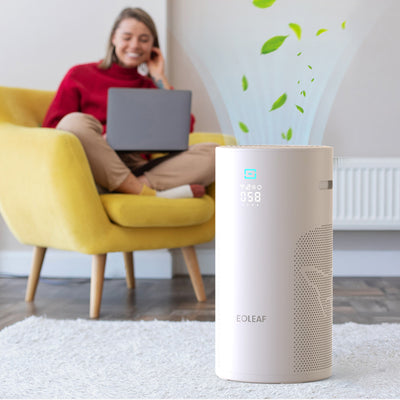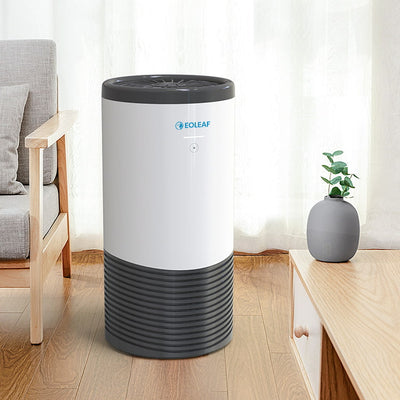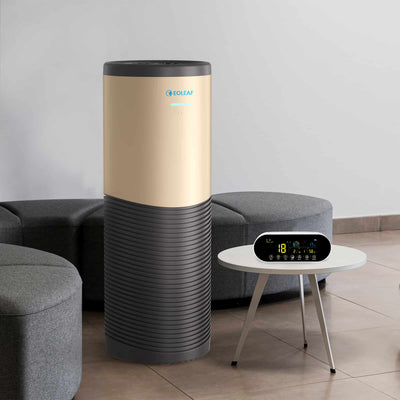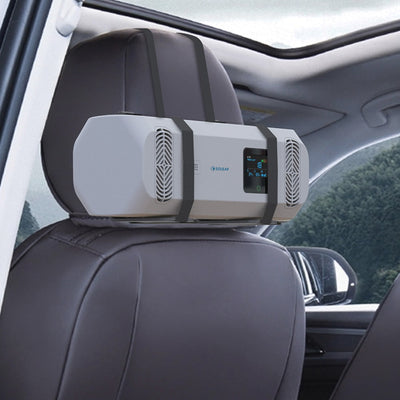The best air purifier for pet odours: how to remove animal smells from your home
We all love our pets. Our furry members of the family bring us unlimited joy and companionship. However, let’s be honest: sometimes they stink, impacting our well-being and comfort at home. Pets may smell bad for a multitude of reasons ranging from simply having a dirty coat to infections that cause an unpleasant odour. Which molecules are responsible for pet odours? How can we combat these molecules at home? Read on to learn more.

Why do pets cause unpleasant odours at home?
Pet smells: the basics
Pet odours may be generated from many parts of your pet’s body: dander, fur, saliva, urine, faeces, and sweat. Pet odours typically penetrate into fabric (furniture, rugs and carpets, clothes) and may easily spread around the house, often remaining airborne. They are difficult to eliminate and may make life unpleasant for those living in your home and visitors alike.
The most common sources of pet odours in a home
Dogs and cats
Dogs and cats may leave behind odours generated by their urine and/or faeces, wet dog smell, and dander. A wet canine coat generates 22 different compounds that contribute to a strong smell, compared to just 16 components found in a dry canine coat, most of which consist of volatile organic compounds (VOCs). Adding water to a dog’s coat increases many of these compounds’ concentrations and volatilities, creating strong airborne odours that may be described as sulphurous, faecal, medicinal, earthy or fungal, or floral1.
Other than urine and faeces, some of the most common causes of odours in dogs and cats include:
- Wet dog smell
- Skin conditions, especially for pets with skin folds who may experience skin fold dermatitis
- Ear infections (often responsible for yeasty smells), especially in dogs with droopy ears
- Excessive flatulence caused by dietary issues and/or digestive problems
- Anal sac secretion
- Litter trays and litter boxes that need cleaning2,3
Rodents and other small pets
Small pets like rabbits, guinea pigs, rodents, and ferrets, have distinct smells of their own. This is generally not caused by the animal themselves: rodents are strict self-cleaners. Odours are more often generated by litter and pet bedding smells that react with urine and/or faeces. This reaction produces a pungent odour that may spread across all areas of the house4.
Birds
The same typically goes for birds: the birds themselves do not commonly generate unpleasant odours. All bird species have different natural scents. Birds with powder down feathers (like parrots) have more of a distinct, musky odour compared to other birds, but it is not generally bothersome. Unpleasant smells tend to come from unclean environments, and a bird’s feathers may also absorb odours in the home like cigarette smoke, cooking smells, and more5.
With such varied causes of odours, in order to tackle them all, it is important to seek out a comprehensive solution. This is where an air purifier comes in.

Can an air purifier remove pet odours?
How air purifiers work for odour removal
Not all air purifiers are capable of removing odours from your indoor air, including stronger smells like those generated by pets or smoke, for example. In order to remove these unpleasant smells, it is essential for an air purifier to contain an activated carbon filter.
Activated carbon is one of the oldest filtration technologies dating back to the ancient Egyptians. Ancient Egyptians employed activated carbon in order to eliminate infection-related smells in medical environments. Activated carbon is carbon that has been processed to become more porous, and it is used to remove impurities from liquids and trap pollutants found in the air.
Using a process known as ‘adsorption’ (not absorption), airborne pollution particles are drawn to and adhere to the outside of the carbon molecule. The increased surface area of the activated carbon makes more room for the contaminants to adhere to through adsorption, creating what is referred to as a "bed." The increased number of low-volume pores allows the activated carbon to catch more contaminants.
Many air purifiers come equipped with activated carbon filters, but their quality may vary significantly. So, too, does the amount of activated carbon used in the filter, which greatly impacts the efficiency and durability of the filter. It is, therefore, important to verify the weight of the activated carbon filter before purchase. The heavier the activated carbon filter, the more pollutants it will absorb.
Comparing air purifiers with other pet odour solutions
There are many pet odour solutions that exist on the market ranging from air fresheners and specialised cleaning products to candles, specific vacuum cleaners, and paying for commercial cleaners. Problematically, many of these solutions add additional pollutants into the air. Air fresheners, specialised cleaning products, and chemicals used by commercial cleaners contribute VOCs to your space which have been proven to have adverse health effects. Candle burning emits fine particle pollution, increasing particulate matter (PM) levels in your indoor spaces. PM has been proven to have many effects on health, including increasing the likelihood of developing multiple types of cancer6. The same goes for essential oil diffusers, which are considered to be irritating to the bronchi.
DIY options like vinegar and baking soda are effective, but they only provide temporary solutions to a long-term problem.
Not only do the above-mentioned solutions often add additional indoor pollution to your space, they also vary in both price and efficiency. When you are looking for a long-term solution to airborne pet and animal smells, an air purifier with a HEPA-certified filter is by far your best choice.

What to look for in an air purifier for pet smells?
HEPA vs. activated carbon vs. ionisers - which ones work best for pet odours?
The air purification market is flooded with air purifiers of all shapes, sizes, and efficiencies. It may feel overwhelming to choose the right one for combatting your pet’s odours in your space. So, which one should you choose? It’s all about the technologies.
HEPA-certified filtration
For particles generated by pet hair and dander, a HEPA-certified filter is your best bet. Seek out a device with the highest-rated HEPA-certified filter available: HEPA H13-certified filters are guaranteed to remove 99.97 particles down to 0.3 microns. Eoleaf devices take it a step further and contain HEPA H13-certified filters that remove 99.97% of all particles down to a size of 0.01 microns in a single pass. Air pollutants with a diameter of less than 10 microns are considered to be fine particle and are only guaranteed to be removed by filters that are certified to do so: HEPA H13 filters are medical-grade and offer some of the most comprehensive particulate filtration on the market. It is not enough to simply see the acronym ‘HEPA’, though! Be sure that the filter is certified which guarantees that it has been tested for efficiency by a third party.
Activated carbon filtration
For pet odours, there is nothing like activated carbon filtration. This is one of the oldest odour-fighting technologies available and can be traced back to the ancient Egyptians for its odour-removal abilities. Activated carbon is also adept at removing chemical pollutants like VOCs, ozone, carbon monoxide, and more. If you use cleaning or other DIY products in your home (whether to fight pet odours or for other purposes), the likelihood is that you have elevated VOC concentrations that may damage your health.
Other technologies
Some air purifiers take it a step further. Eoleaf devices contain an impressive 8 air filtration technologies, each of which is designed to target a specific type of air pollution. Our air purifiers offer one of the most comprehensive air filtration methods on the market. In addition to the technologies mentioned above, Eoleaf devices offer:
- UVC sterilisation: an essential technology that not only eliminates germs (viruses and bacteria) but also sterilises your filter to protect you from potential recontamination
- Photocatalysis: a depollution technology that further combats chemical pollutants, VOCs, and complex gases
- Ionisation: Eoleaf devices are 2-in-1 air purifiers-ionisers; ionisation is another depollution technology that emits negative ions which bind themselves to positively-charged pollution particles like particulate matter and weigh them down to the ground, all without emitting ozone which is dangerous for both you and your pets (Eoleaf devices are certified ozone-free)
Key features to consider when buying an air purifier for your home
Air purifiers offer a multitude of technical characteristics. It is important to keep an eye out for those that are the most important when trying to combat pollutants generated by your pets.
Clean Air Delivery Rate (CADR)
CADR determines how efficient an air purifier is at removing pollutants from your indoor air. In general, the higher the CADR, the more efficiently it filters indoor pollution. CADR refers to the air purifying device's airflow. This is the amount of filtered air that your home can receive from an air purifier. Some air purifiers have only one CADR number, whereas others have several CADR values for different pollutants (such as smoking, dust, pollen, etc.). The faster an air purifier removes pollutants, the higher its CADR number.
Eoleaf devices boast high CADR numbers that set them apart from their competition:
- NeoPur 400: 420 m3/hr
- TeraPur 600: 570 m3/hr
- AltaPur 700: 670 m3/hr
- PurCar: 45 m3/hr
Room size
When combatting any type of indoor air pollution, including and especially those coming from your pets, an air purifier must be properly sized. Choosing an air purifier that is sized properly to your desired coverage area (in m2 or square feet) or room size will ensure that the device will filter all of the air in your space in an appropriate amount of time. Eoleaf devices are sized as follows:
- NeoPur 400: filters the air in room sizes up to 40 m2 (430 square feet)
- TeraPur 600: filters the air in room sizes up to 80 m2 (860 square feet)
- AltaPur 700: filters the air in room sizes up to 120 m2 (1290 square feet)
- PurCar: filters the air in vehicle cabins up to 13 m2 (459 cubic feet)
For room sizes or coverage areas larger than 120 m2 (1300 square feet), you will likely need more than one air purifier in order to treat all of the air in your space. To provide a couple of real-life examples:
- If you live in a space of 150 m2 (1615 square feet), we would likely recommend two TeraPur 600 air purifiers which would cover 80 m2 (850 square feet) each
- If you live in a space of 200 m2 (2150 square feet), we would recommend one AltaPur 700 air purifier and one TeraPur 600 air purifier which would cover 120 m2 (1300 square feet) and 80 m2 (850 square feet) respectively
For specific sizing, reach out to our team for more information.
Noise level
With an air purifier, you should be able to enjoy all of its advantages without having to deal with a noise level that disturbs both you and your pets. It shouldn't interfere with your ability to work, study, or sleep. At its lowest fan speed, a quiet air purifier is almost silent; even at its maximum fan speed, it never produces noises higher than 70 dB, which, when prolonged, can cause hearing loss.

How to maximise the effectiveness of your air purifiers for pet smells
Placement matters: where to position your air purifier
When choosing the right location for your air purifier in your space, a few best practices should be respected. For example, it is recommended for an air purifier to be placed as close to the source of pollution as possible. If pollution generated by pets is your biggest concern, it is ideal to place it near litter boxes, bird or rodent cages, pet beds, or other areas where your pets spend the most time. An air purifier should also be placed in a part of the house with good airflow and should never be obstructed by furniture or shelving.
Filter changes: how often do I need to change my filter?
Filter change requirements vary from brand to brand, model to model. The general rule is that the lower-quality a filter is, the more often it needs changing. Many of our competitors’ air purifiers require filter changes every 3 or 4 months. This contributes significantly to your budget and waste produced.
Eoleaf filter changes are easy: our high-quality filters only require changing once a year (every 12 months on average). Additionally, whereas other brands have separate filters that require multiple replacement schedules, our 8 technologies are all contained within the same filter block. Only one filter needs changing, once per year.
Additional steps to remove pet odours from your home
With the help of a high-quality air purifier like those on offer by Eoleaf, there are other steps you can take to help reduce pet odours in your space. Following a strict pet grooming and cleaning routine is a great way to keep your pets and your home clean. Wash your pet’s bedding regularly. Try to use natural, VOC-free or low-VOC cleaning products that are safe for both your health and the health of your pet(s).
Investing in an Eoleaf air purifier to combat your indoor air pollution and odours is an excellent, easy step to improve your well-being at home. Reach out to our team of indoor air pollution experts any time for help on choosing the right device for your needs.

Frequently asked questions
Do air purifiers work for strong pet smells like cat urine?
Air purifiers equipped with heavy, high-quality activated carbon filters will combat any odours found in your indoor air, including strong pet smells like cat urine. The heavier the activated carbon filter, the more efficient it is. Be sure to inquire with your air purifier’s manufacturer regarding the weight of their activated carbon filters.
Are air purifiers safe for pets?
Yes, absolutely. Air purifiers are safe to use in homes with even the most vulnerable including children, pregnant women, the elderly, and immunocompromised/immunosuppressed individuals. They are also safe for pets.
How long does it take for an air purifier to remove pet odours?
An air purifier starts working immediately once installed. A common metric in the field of air purification is Air Changes per Hour (ACH) which indicates how frequently an air purifier replaces the entire volume of air in a room with purified air each hour. A minimum ACH value of five, which indicates that a device replaces the air five times per hour, is advised by the Centres for Disease Control (CDC). When choosing an air purifier, be sure to ask your manufacturer if the model you have in mind is properly sized and that it will provide an ACH of 4 or 5 in your space.
Can an air purifier help with pet allergies, too?
A high-quality air purifier containing the right technologies will absolutely help reduce pet allergy symptoms. As part of their 8-step filtration method, Eoleaf devices are equipped with medical-grade HEPA H13-certified filters that remove 99.97% of all pollution particles down to a size of 0.01 microns in a single pass. This includes fine particles generated by pet hair and dander that cause or aggravate allergies in sensitive individuals.
Resources
1 Young, L., Pollien, P., Roberts, D., & Cline, J. (2002). Compounds responsible for the odor of dog hair coat - WSAVA2002. WSAVA 2002 Congress. https://www.vin.com/apputil/content/defaultadv1.aspx?pId=11147&id=3846472&print=1
2 Miller, L. (2016, April 6). 6 reasons your dog smells bad. PetMD. https://www.petmd.com/dog/slideshows/6-reasons-your-dog-smells-bad
3 Hawn, R. (2024, November 15). Why does my dog smell? how to help a Stinky dog. American Kennel Club. https://www.akc.org/expert-advice/health/why-does-my-dog-smell/
4 Do guinea pigs smell? How to stop your piggy getting pongy. Home & Roost. (n.d.). https://homeandroost.co.uk/blogs/guinea-pigs/do-guinea-pigs-smell?srsltid=AfmBOopCqu1SpXeiXu2QFI5N7pEDCGOvsvfhGJSegbN9eh6YwFgQ3xxB
5 Parrots and odors. BirdTricks. (2012, August 8). https://birdtricksstore.com/blogs/birdtricks-blog/parrots-and-odors
6 Guo, Z., Mosley, R., McBrian, J., and Fortmann, R. (2000) “Fine particulate matter emissionsfrom candles,” Engineering Solutions to Indoor Air Quality Problems Symposium, Air & WasteManagement Association, VIP-98, pp 211-225.

